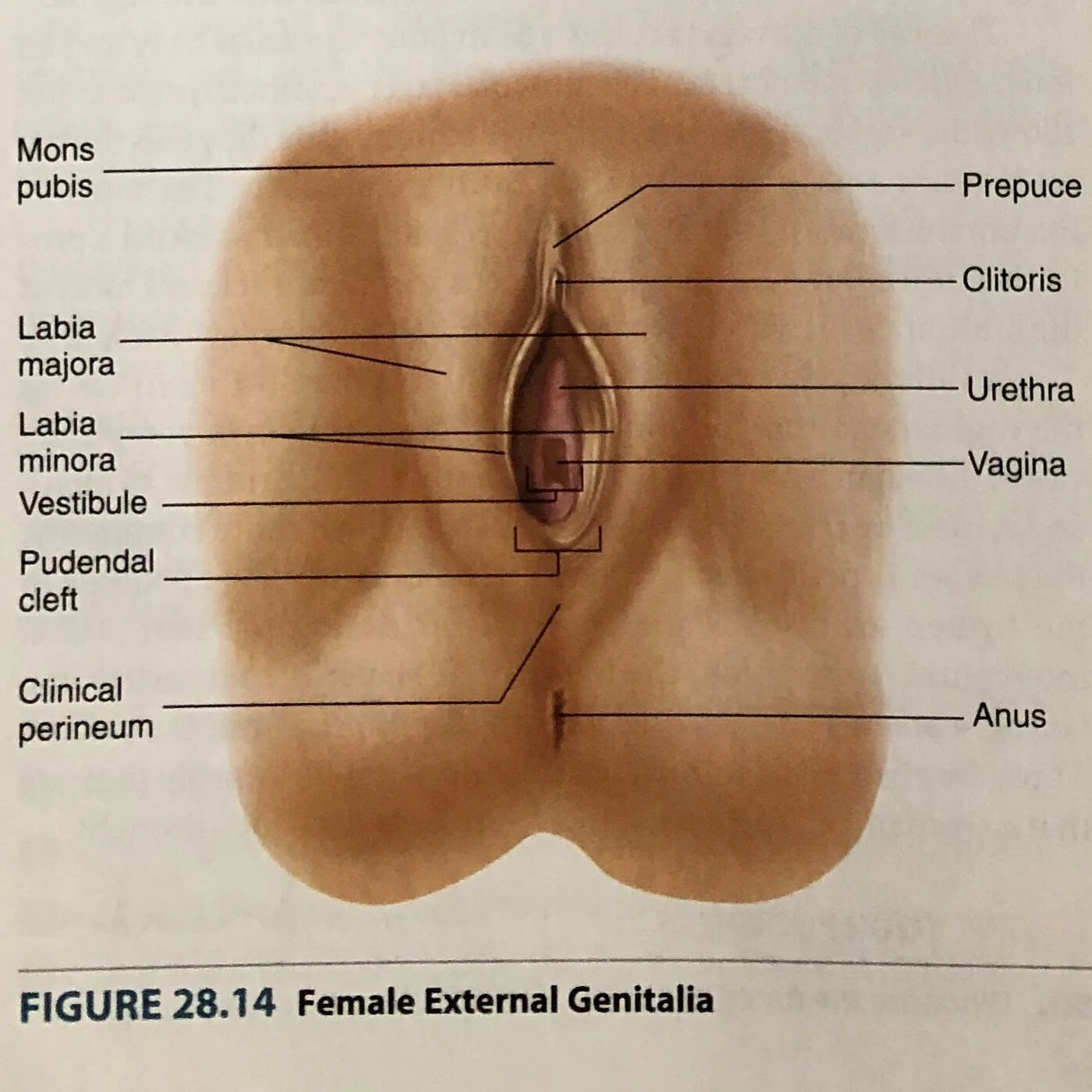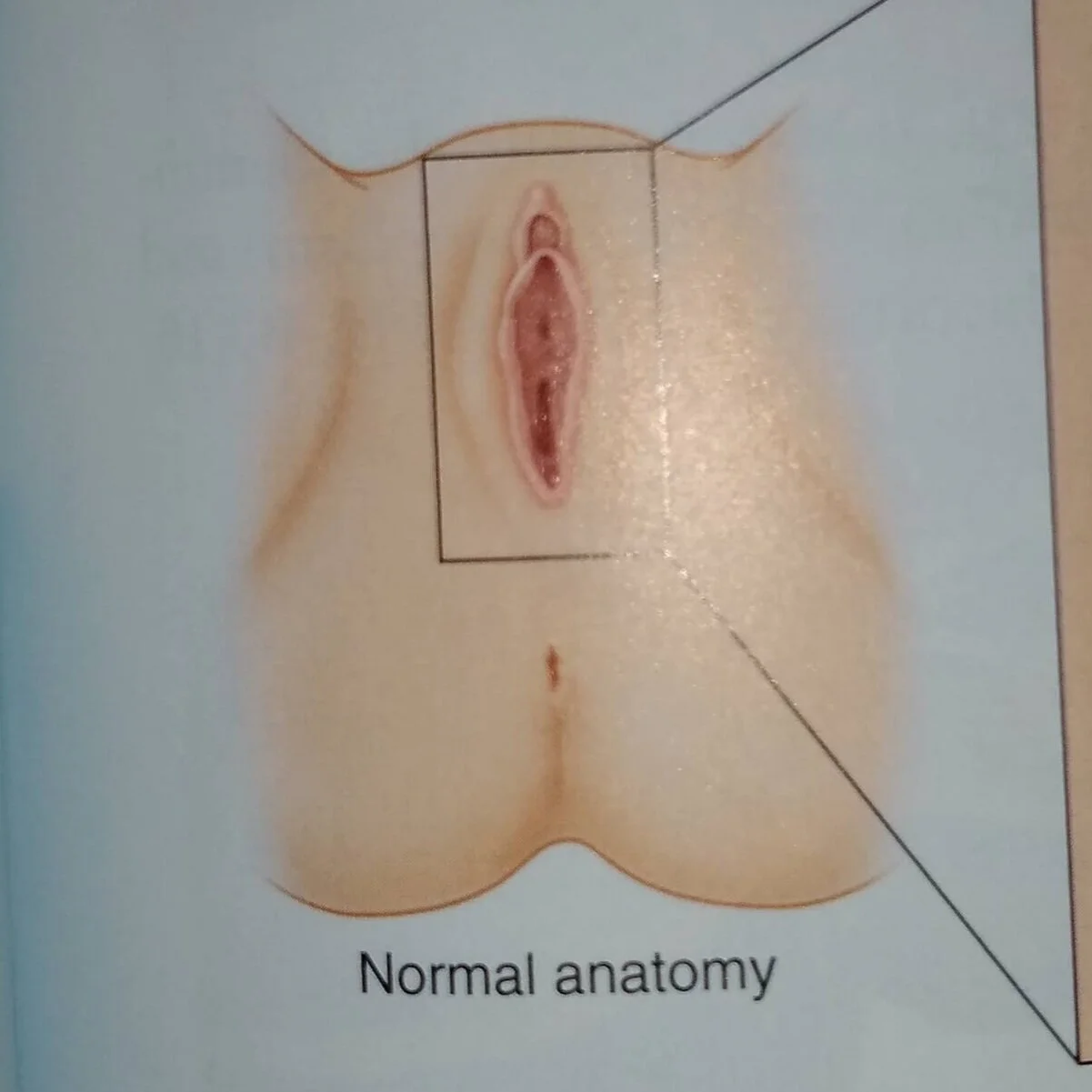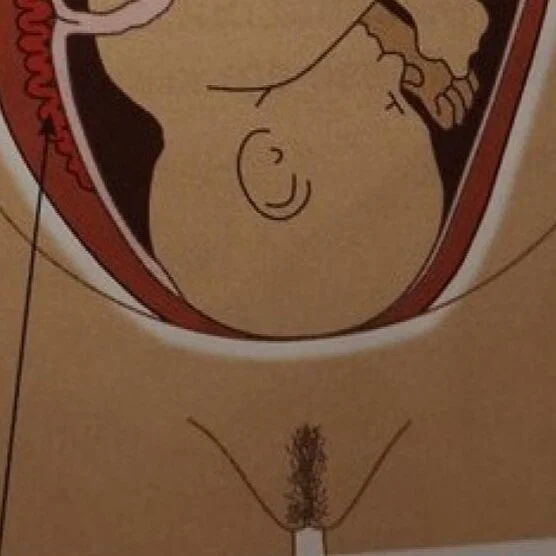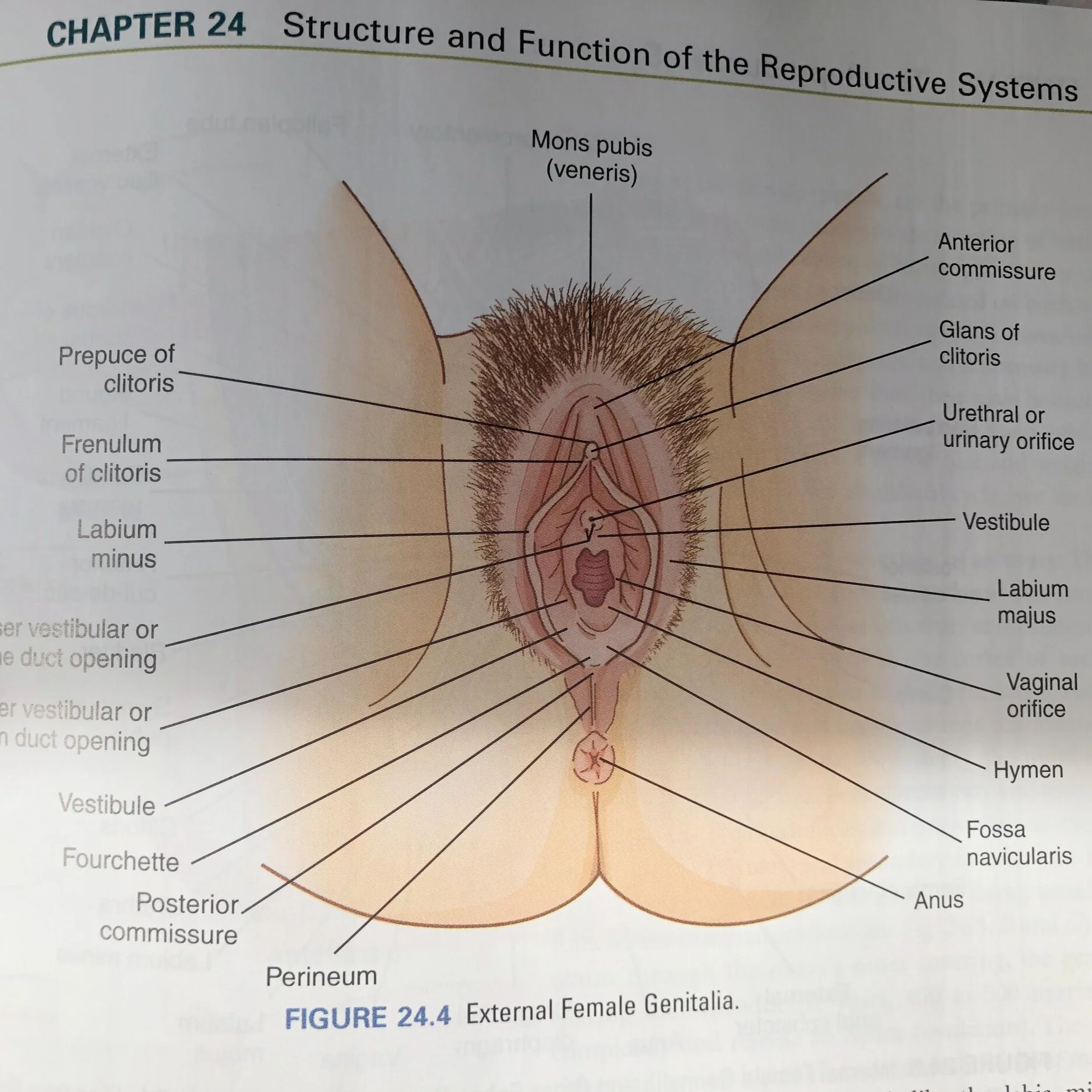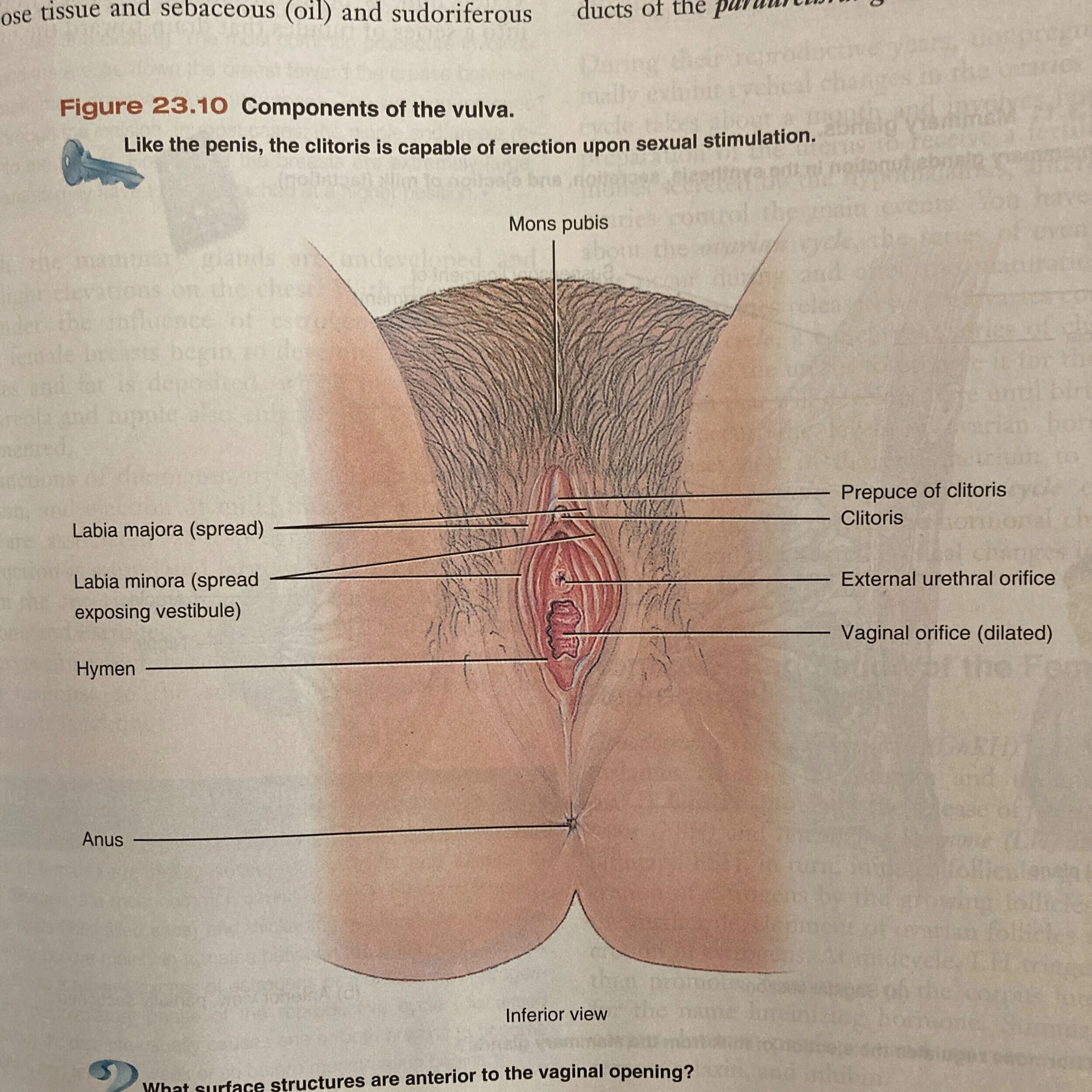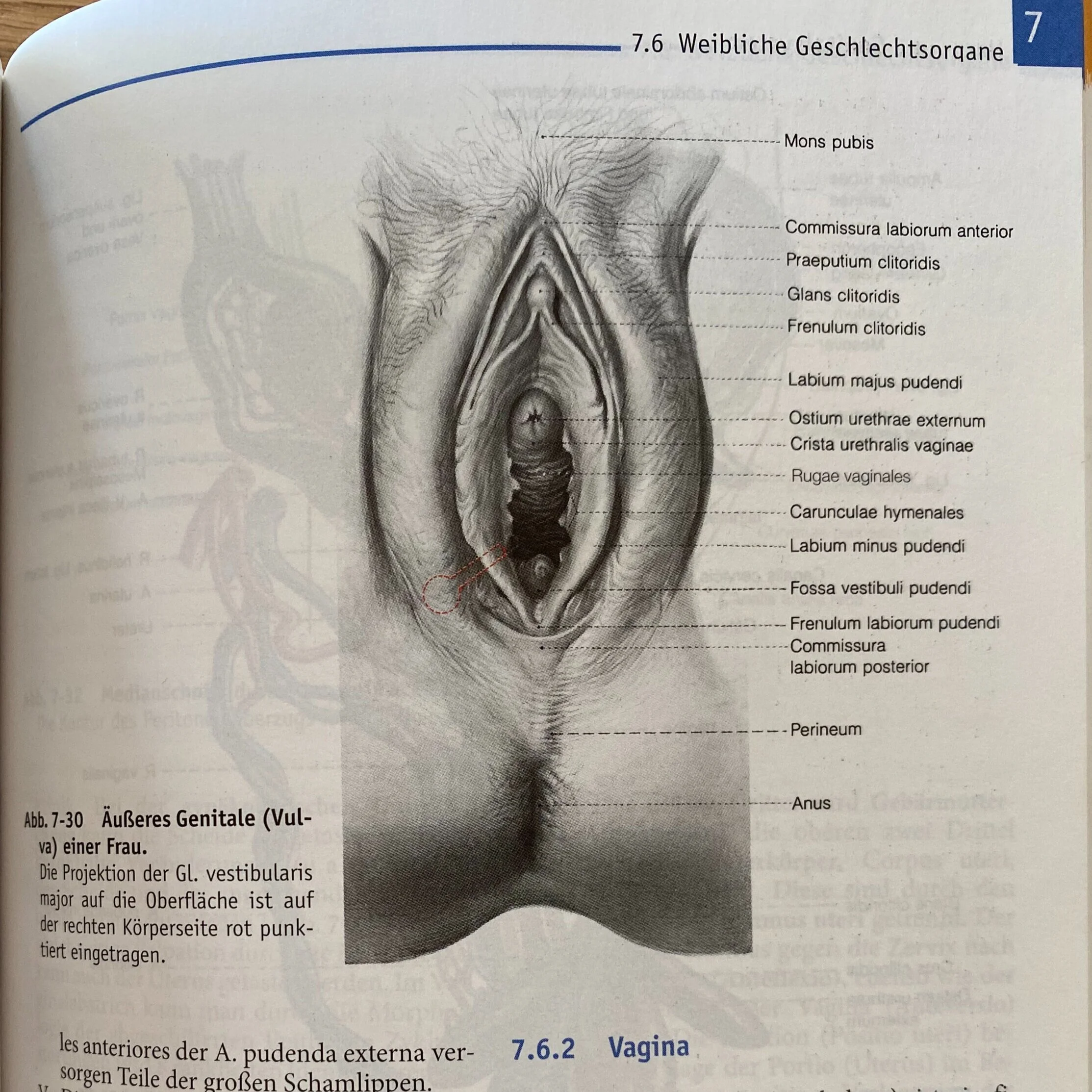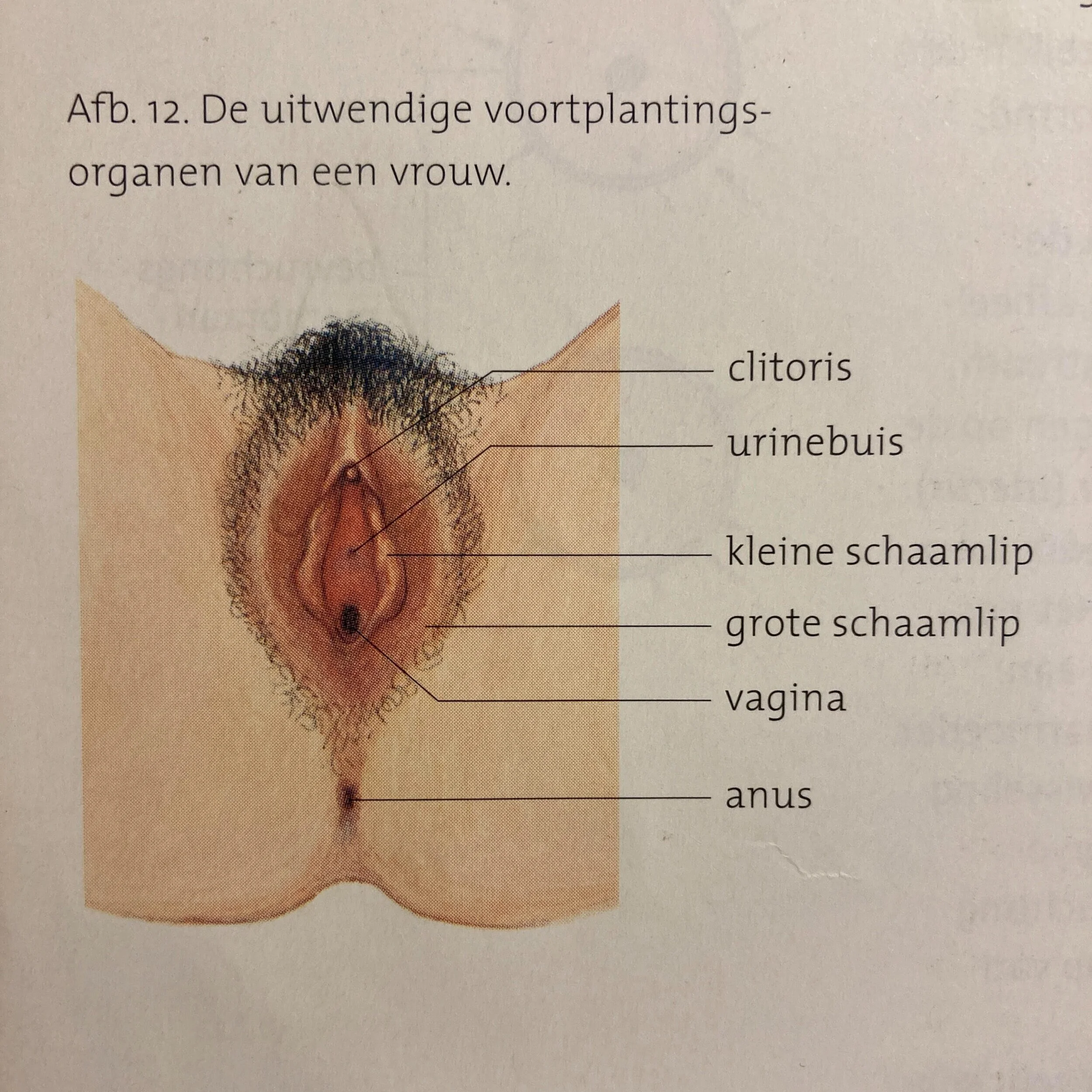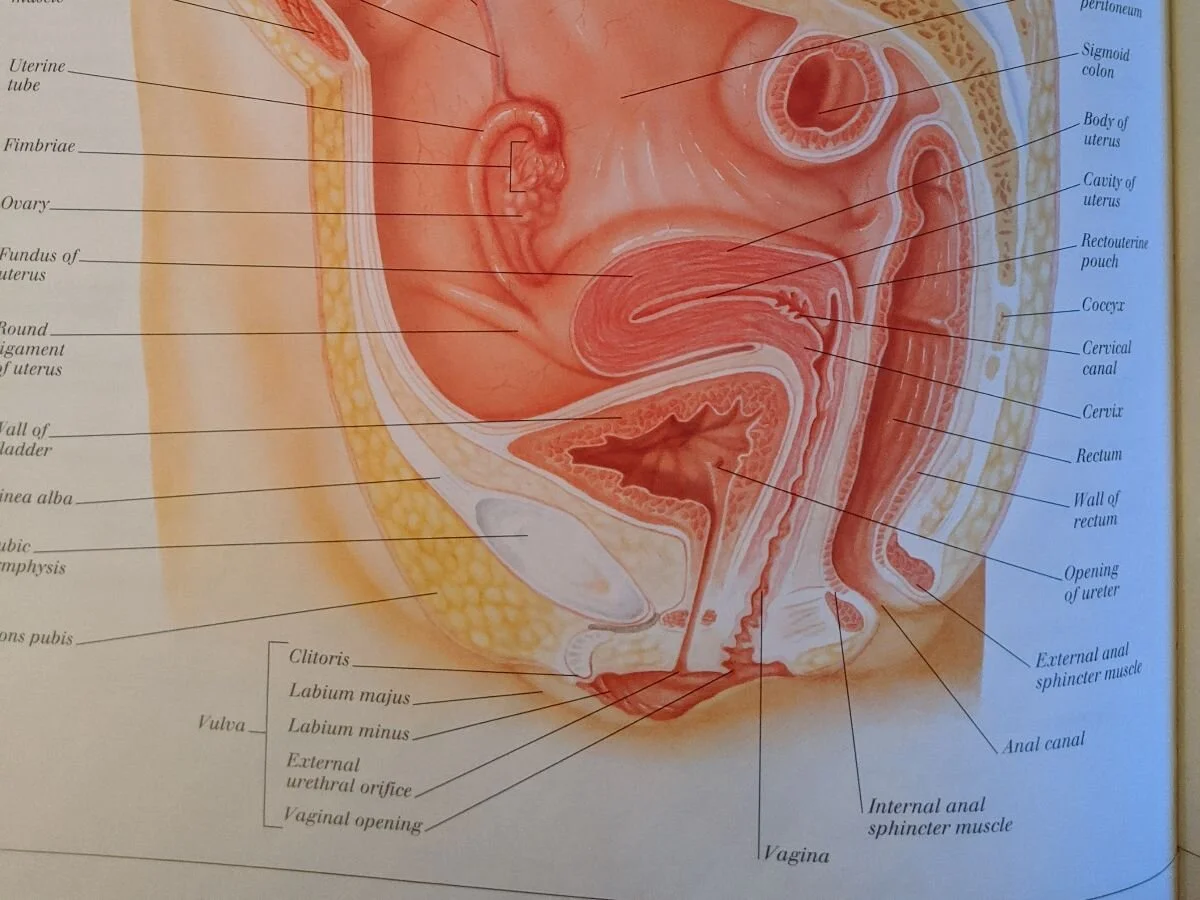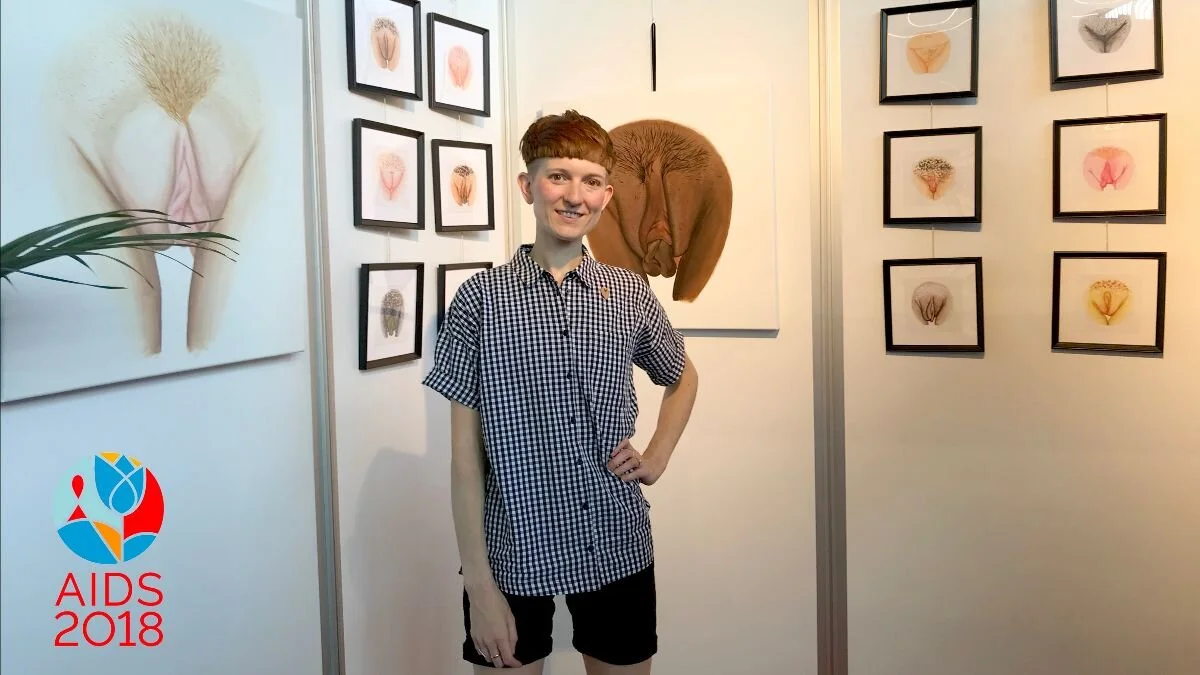Newsletter #2
The vulva in anatomy books around the world
Hi there!
The vulva in textbooks: most of us have seen a diagram of the vulva before, describing the anatomy. But how many of us actually recognised themselves in these diagrams? I remember that my high school anatomy book showed a simplified illustration of vulvar anatomy, depicting the vulva in outlines (and I'm not even sure if the book showed colour illustrations).
A few weeks ago I decided to do a little Google search for anatomy illustrations of vulvas and came to the conclusion that since then, not much seems to have changed in the medical representation of vulvas. Most of the vulva diagrams I found had light skin, little to no hair and small inner labia. They all looked very similar, and gave a pretty one-sided view of what a ‘normal’ vulva looks like.
Let me start by saying that there are many of us who do identify with these illustrations – which is great – and at the same time during the past years I have received many emails by people from around the world who told me that they started to feel insecure about their vulva after not being able to recognise themselves in the ‘textbook normal’ vulva.
On Instagram I asked you to submit your ‘best worst examples' – images of vulvas in textbooks that show the anatomy, but that fall short of the realistic or diverse representation of this body part. Images that show a ‘picture-perfect’ vulva and describe it as 'normal'. You’ve shared many interesting photos with me from anatomy books from around the world (Austria, Canada, Costa Rica, Denmark, France, Germany, Poland, Sweden, The Netherlands and the USA).
I took a good look at all of them, and this is what I found:
1. All vulvas depicted have light/pink skin
In the illustrations that were shared with me I didn't find actual representations of skin tone diversity, and there were no vulva representations of individuals with darker skin tones. Besides that, nearly all of the images depict vulvas with light skin and pink labia, and none of the images show labia with a darker (purplish or brown) hue. In addition, the anus usually wasn’t darker in tone, but had the same colour as the surrounding skin.
2. Many of the vulvas have little to no pubic hair
In the vulva illustrations that do show pubic hair, the hair is often sparse, it's usually trimmed short and doesn't grow around the anus or in the crotch. And there is no leg hair depicted in any of the illustrations.
3. Small inner labia
Most images depicted show vulvas with small and very thin inner labia. Labia diversity isn't represented in these books (as there's typically just one vulva being shown). Some of the books write about how different vulvas can look, but none of them show actual diversity. The few illustrations that depict a frontal perspective of the vulva show a vulva without hair and without visible inner labia.
4. Only shown from the side
In some of the textbooks there was no bottom-perspective illustration of the vulvar anatomy at all – these books merely depict an internal side-view of the reproductive system. And if a frontal perspective is being shown, we don't see much of the vulva, but just the internal structure: uterus, ovaries and vagina.
5. Breaking news: the clitoris is a small thingy?
What struck me most is that in the images shown above (see them close-up below this paragraph) the clitoris is only depicted as a small dot, a bean-shaped thingy or a tiny ‘caterpillar’ instead of the intricate structure it actually is. Please note that these are current-day textbooks containing outdated information that are still being used today and are meant to teach students about vulvar anatomy!
(Small reminder, see what the clitoris actually looks like on this anatomy page)
Correctly depicted clitoris – 100 years ago
Interestingly, in an older French textbook that a community member shared with me (written around the end of the 19th century or at the beginning of the 20th century), the clitoris was depicted correctly (see images below). Even its placement in the pelvis (underneath the pubic bone) was illustrated in detail. It makes me wonder when and why this disappeared in newer publications (if you have knowledge about this history, please feel free to email me, I'd love to dive into the details around this subject!).
Correctly depicted clitoris – 100 years ago
Interestingly, in an older French textbook that a community member shared with me (written around the end of the 19th century or at the beginning of the 20th century), the clitoris was depicted correctly (see images below). Even its placement in the pelvis (underneath the pubic bone) was illustrated in detail. It makes me wonder when and why this disappeared in newer publications (if you have knowledge about this history, please feel free to email me, I'd love to dive into the details around this subject!). Whatever it is, the way you tell your story online can make all the difference.
On a more positive note
There were some books that did show a more diverse and realistic representation of vulvas, with for example more diverse labia or more pubic hair styles. Interestingly these were mostly the books that depicted actual photos of vulvas instead of simplified illustrations. One of these books actually showed a vulva with brown skin, and a vulva with a genital piercing. Labia diversity was also somewhat represented in these photos.
Side note: Of course it’s great that in the submissions I received there were some (relatively) good examples of diverse anatomy (and I’m aware that I specifically asked for bad examples), however I wish that I hadn’t received as many ‘bad examples’ as I did, and that the conclusion to my call for submissions would have been that in actual modern textbooks the material is currently diverse and inclusive. There’s still much, much room for improvement in this area of education.
We need better representation
So, what's the problem with vulva representation in textbooks? First of all, they lack representation of diversity (as none of these textbooks show vulvas with a variety of shapes, sizes or skin tones). The issue with not representing diversity is that there’s a good chance that you won’t recognise yourself in the image depicted, which can make you feel insecure about yourself. Think about it: if you frequently see a specific vulva type in the popular media, and on top of that also anatomy books only represent this kind of vulva, you may conclude that indeed there’s something unusual about your own body – if yours differs from the one you keep seeing around you. You may start questioning if you are actually normal, and these feelings can eventually lead to body image issues *. Secondly, the typical vulva shown in these books is a very ‘picture perfect’ simplified vulva (which, I assume, could make it easier to explain all parts of the anatomy), but when you’re a teenager and you look at the illustrated vulva and then back at your own body, you may start wondering if the real vulva you have (which for example has bumps, acne, discolourations, stretch marks, hair, brown skin, long inner labia, a clitoris that peeks out, a round mons pubis, etc) isn’t ‘normal’. Not seeing yourself represented in a realistic way can evoke feelings of insecurity.
* These topics have arisen frequently in the stories I have heard from the diverse individuals I’ve met over the years. For many of these people, the negative feelings they’ve had or continue to have towards their vulva have made them insecure and embarrassed in intimate situations, and have often affected their ability to be freely intimate with their partners or lovers. These feelings sometimes affected their self-esteem to such an extent that sex would be been impossible, and in some cases, they have even led to relationship breakdown. Many of those I have spoken to felt uncomfortable touching or looking at their own vulva. Research has shown that when a person has negative feelings towards their genitals, they can often experience feelings of shame, sexual distress, as well as lower (sexual) self-esteem and sexual dissatisfaction.
It’s frustrating that so many of us have to experience this, and that there are so few visual and informational resources for us to access. It seems it is a problem we have to solve by ourselves, as speaking openly about these topics is quite uncommon and pretty difficult for many of us – which in a way feels contradictory as it’s an experience so many of us have in common.
“I cried for weeks and felt so hopeless. I even joined a website (despite being underage) where men would ‘donate’ money to women who couldn’t afford plastic surgery. Vulva positive Instagram accounts like this were the first time I had ever seen vulvas like mine, and they have been the main factor in me learning to love myself. This is not vanity. This issue does more than affect women’s self esteem. In my case it affected my self worth, my sexuality – it made me more at risk for abuse.”
Inclusive educational material for medical health professionals
Perhaps the most astonishing stories I’ve heard during the past years were incidents in which a medical health professional made an unsolicited remark about the vulva of their patient (for example a gynaecologist or GP during a pap smear or periodical check-up). In many of these stories the medical professional commented on the labia of the patient and said something like: ‘There’s something you can do about it, you know. I can easily refer you to a surgeon who can fix your inner labia – it’s a small and easy procedure’. The first time I heard a story like this, I couldn’t believe my ears. By now, this type of story has been shared more than a couple dozen times.
I remember having a similar experience with GPs during an exhibition of The Vulva Gallery at the AIDS conference in 2018. I was standing next to my work and a group of doctors passed by (who didn’t know I was the creator of the vulva illustrations). They stood still, looked at the images and started laughing and pointing out the ‘weird’ ones – the ones that ‘definitely needed surgery’. I was shocked by their response and couldn’t believe what I heard; after all these were young doctors. I was expecting them to be progressive, mindful and at least up to date about vulva diversity.
If a medical health professional suggests surgery to us (someone whose opinion we usually take seriously as they are the experts), then you have to be very confident in order not to become insecure about the way you look.
Of course I know that there are many progressive, mindful, caring and supportive medical health professionals who would never make remarks like the ones above, but I do think the fact that this does seem to happen often (and in different countries) does point out a problem that may find part of its resolution in an inclusive and representation of anatomy.
This is me, Hilde Atalanta, at the AIDS 2018 conference in Amsterdam, The Netherlands
More than just textbooks
Let it be clear that I’m not blaming all the problems mentioned solely on a single-sided representation of vulvas in textbooks :) There’s much more that comes into play when it comes to negative genital self-image issues. Representation of vulvas (and the conversation around ‘normality’) happens in all kinds of contexts – not just anatomy books.
Anatomy books do however have an important exemplary role as they are meant to teach; they are an entity whose content you automatically take seriously as (usually) their content is written by experts, scientists, educators or professionals from the field. This is why it is all the more important that these very books contain accurate and inclusive information. Especially as many of these books are directed to teenagers and young adults (who are in the formative years of their lives and learn about anatomy for the first time) it’s important to teach them about anatomy in a realistic way, thereby reassuring them that their bodies are actually ‘normal’ (and that their ‘flaws’ are – news flash! – actually not really flaws to begin with).
In the conversations I’ve had with individuals from all around the world, it became clear that seeing actual diversity was very helpful in understanding their anatomy and feeling more comfortable about their vulvas. It’s comforting to know that your body is ‘normal’, to be reminded that you are not ‘weird’. That you are in fact not alone.
““In my journey to accept myself more, I found a lot of wonderful projects that helped me to see there’s nothing abnormal about my vulva - projects like The Vulva Gallery - and it’s truly helping me to accept myself more. Everyday I see a new artwork, a new history of women who go through the same as me. I realise that if I consider them to be beautiful and strong, then I can think the same about me.””
A more accurate, more inclusive approach to education
When forming the plans for my book, the one thing I felt should absolutely be included was an anatomy chapter that portrays vulvas in a way that I missed when I was a teenager. This resulted in two foldout pages that show various vulvas with anatomy descriptions. And of course I knew I couldn't represent all shapes and sizes, however with these foldout pages I did want to show more variety in order to say: there's lots of ways our vulvas can look – just like in real life!
I guess what I want to say is: it is possible (and important!) to change the way we represent vulvas (and bodies in general) in textbooks. You may need to add an extra page for imagery, but this allows you to represent (and with that: comfort) and speak to many more individuals who use this book to learn about the anatomy of their own bodies, and of the bodies of others, in all their diversity. It's a small gesture, but it can make a big difference. So hereby I’m taking the opportunity to invite any of you who are working in the field of publishing (of anatomy/sexuality books): I’d love to work together to create a more inclusive and diverse range of anatomy books. Feel free to reach out and let’s talk about the possibilities!
Share your topics!
My next newsletter will come out in a month! I’m curious about the topics you would like me to touch upon in one of the upcoming editions. Please feel free to share your ideas with me :)
Oh, and I would love it if you’d share my newsletter with others! Do you have a friend, sibling, lover, family member, therapist, or anyone else that you feel would be interested in all things vulva? Please don’t hesitate to forward this newsletter and help me spread vulva-positivity around the world ✨
Till next time,
Hilde xx







